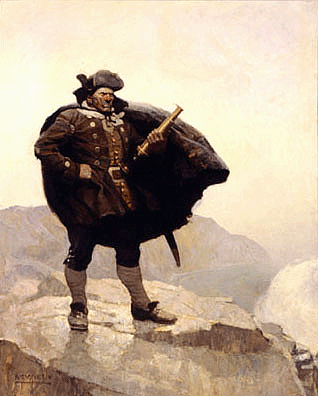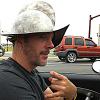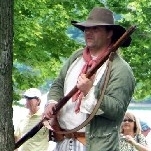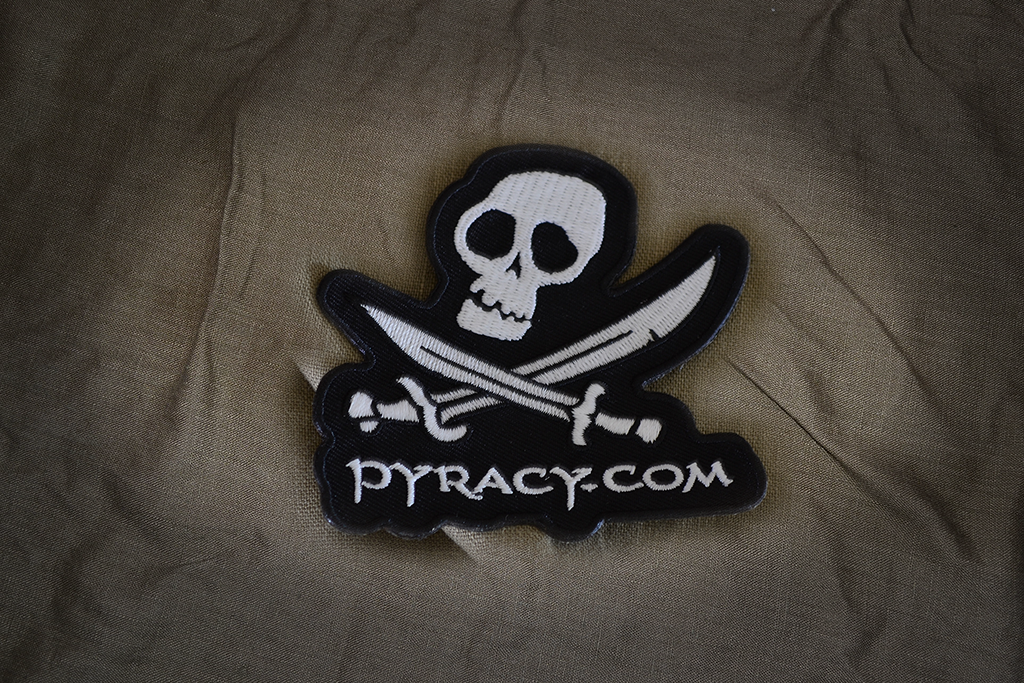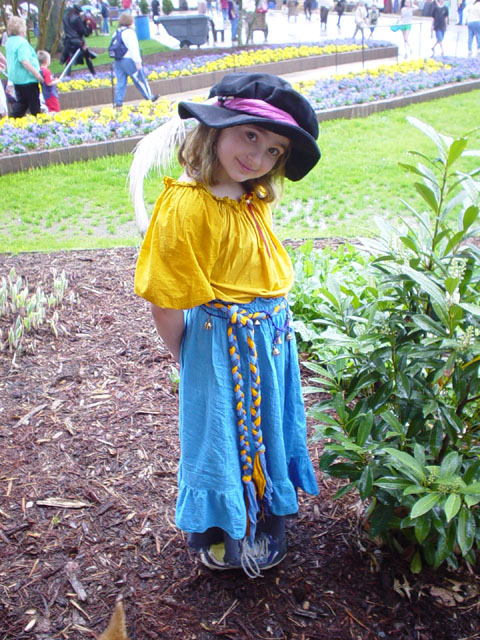Captain Twill
Academic Fight Circle, Research, Share, Discuss & Debate Maritime History.
1,566 topics in this forum
-
- 3 replies
- 3.3k views
I don't own much Osprey book, no more than the pirate book (I have discussed a lot about it as you may know) but I have always looked previews etc for interesting books etc. Now this belongs to Twill as the book is not fiction (well at least it tries to tell the truth) The book is a part of the new "Raid" series and its name is "Blackbeard’s Last Fight – Pirate Hunting in North Carolina 1718" ( http://www.ospreypublishing.com/store/Blackbeard%E2%80%99s-Last-Fight-%E2%80%93-Pirate-Hunting-in-North-Carolina-1718_9781780961958) Author: Angus Konstam Illustrators: Johnny Shumate Mark Stacey Now my personal thoughts about the book while I don't yet own it. At fi…
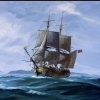 Last reply by Swashbuckler 1700,
Last reply by Swashbuckler 1700, -
- 4 replies
- 1.1k views
Coastie's thread on the Astrid started me thinking about how ships were salvaged back in GAoP. Like many landlubbers, I tend to think of a "lost" ship as sitting on the bottom of the sea without a trace remaining, forgetting that ships, like the Astrid, can be sitting on the rocks with not only their masts but substantial parts of their hulls above water. Such a ship might not be out of reach of 18th century recovery technology. We hear frequently of wrecker-pirates, who swarm out onto a wreck and strip her, or even lure a ship onto the rocks with false lights; how did they go about getting the loot? The one contemporary source I know of about 18th century salvage is …
 Last reply by flagman1776,
Last reply by flagman1776, -
I'd like to know about how to behave in a Caribbean tavern so I can get my characters in trouble. Specifically, I need to know the tolerance for fighting and necking, but any information on tavern behavior (good or bad) is welcome and wanted. Thanks!
 Last reply by Jib,
Last reply by Jib, -
- 0 replies
- 471 views
I first came across this thing in a local history magazine. Then it was the Google's turn and I was surprised to find a Wikipedia article about it. So the Norman Island was apparently a real island and still is. Also at least some parts of the treasure article is true. However does anyone know how much of the story is evidently real? The article had for example a wrong link to a person (Owen Lloyd) so I am unsure about its accuracy. I am only curious and I saw that this thing has no thread yet so in case there is a conversation to come....
 Last reply by Swashbuckler 1700,
Last reply by Swashbuckler 1700, -
- 2 replies
- 1.3k views
I know of three basic ways ships carried boats. 1. On davits, basically timbers or metal beams shaped like upside down versions of the letter "J," with the boats hanging over the ocean from the short end of the "J." I think I read somewhere that davits didn't come along until the 19th century. Is that right? 2. On the open deck, upside down to keep rainwater out of them. This has to take up a huge amount of deck space. 3. Towed astern. This is actually shown in many of the pictures in the Osprey books on pirates. This has the obvious advantage of keeping the boats out of the way, and saves the time spent launching them, but I shudder to think of what would happ…
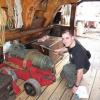 Last reply by Coastie04,
Last reply by Coastie04, -
- 0 replies
- 1.1k views
I was wondering how old "HMS" prefix for RN ship is. If the trust wiki it was used as a prefix since 1789. But it also says "HMS is the ship prefix used for ships of the navy in some monarchies, either formally or informally." . Simple Wiki Says that " It is the official prefix of Royal Navy ship names since 1789." I take that it was it used informally before that as it seems that links it to decades earlier and to gaop. Firstly in many books including Charles Johnson's General History navy ship are called as "His majesty's ship" which is just full version of HMS. Also in other works of the early 1700s "His majesty's ship" is used to mean navy ships Also looking a…
 Last reply by Swashbuckler 1700,
Last reply by Swashbuckler 1700, -
- 2 replies
- 564 views
Say that a Pyrate had a fleet. How were the commands given to the other ships. I've heard of Jean Doublet, a French Privateer, wrote that they had set recognition signals depending on the day of the week, "she to Windward is to hale up all her Sails, and lower her Top-sails, with her flying Jib loose; and she to Leeward is to answer with making what Sail she can, her Ensign in her Fore-shrouds, and fire a gun." and I know of the broadside battle formation below, but was there a certain way that pirate "admirals" communicated with other ships? Thanks for you help, in advance.
Last reply by Silver, -
- 4 replies
- 855 views
Lately I have been studying naval traditions of Gaop Now I am wondering prize money.At least accordingly to Wikipedia (yes yes) The prize money as it was know in Nelson's era was established in 1708 and it suffered only minor changes before Napoleonic wars ended. Though there had been rather similar system earlier in the 17th century... " This practice was formalised via the Cruisers and Convoys Act of 1708. An Admiralty Prize Court was established to evaluate claims and condemn prizes, and the scheme of division of the money was specified. This system, with minor changes, lasted throughout the colonial, Revolutionary, and Napoleonic wars." Also as another modern so…
 Last reply by Daniel,
Last reply by Daniel, -
- 13 replies
- 1.5k views
Hi. Has anyone stories about navy Press gang from gaop or even Nelsons' time? I am just curious.... I have found a short one from 1740s I will post it when I have energy and if anyone is interested..... That quote is from "Ship: 5000 Years of Maritime History" written by Brian Lavery... Being visual person I post a picture and if anyone has found more they are free to post them here This is from latter part of the 18th century
 Last reply by Bright,
Last reply by Bright, -
- 8 replies
- 3.6k views
I am wondering when The Royal Navy actually took flogging as popular punishment. There is tons of pirate books telling about flogging but so often there mixed a lots of later Nelson Navy stuff with pirates. What about Gaop RN? how popular the flogging really was?
 Last reply by Swashbuckler 1700,
Last reply by Swashbuckler 1700, -
- 10 replies
- 1.4k views
Just a quick question because I am TOO lazy to figger it all out on my own... When did hammocks come into popular use on ships? I think there was a thread here - or perhaps on another site - where it was once discussed, but I have no idea what was mentioned or where that thread is now. Before Columbus 'discovered' the Americas - and the hammocks native peoples used - what sort of sleeping arrangement was there aboard ship? Hanging cots? Bunks? LL Bean sleeping bags?? Then, how soon after his voyage to the New World did hammocks come into popular use aboard ship, and what would have been the most likely sleeping arrangement on a pirate vessel during the Golden Ag…
 Last reply by Mission,
Last reply by Mission, -
- 2 replies
- 524 views
...if suddenly confronted, while up into the rigging, during his watch, with stomach cramps? The beginning of the "flux", or a food poisoning or something? I guess he can't get down until the watch ends, the bossun will be angry with him anyway... but if he doesn't go to the "heads"... it would be worse.
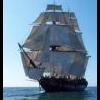 Last reply by Elena,
Last reply by Elena, -
- 18 replies
- 1.7k views
This 2011 segment had probably been discussed before, yet doing a search I hadn't found it, so I thought I'd set it down here if anyone were interested. This morning over breakfast, I happened to catch the NatGeo, Warrior Graveyard segment, "Navy of the Damned." Had anyone else seen it? Granted, it reported out on the British Navy during the 18th/19th century, but it was very well done, and I think that many of the daily struggles of the British Naval sailor transferred to that of the pirates as well. If you'd not seen it, and find yourself interested, I'm hoping this link works; www.youtube.com/watch?v=YKHczkvtDwY
 Last reply by Mission,
Last reply by Mission, -
- 43 replies
- 10.2k views
Swashbuckler 1700 was sharing some images of Blas de Lezo with me. Señor de Lezo was a Spanish Commander active during the Golden Age of Piracy. (Wiki notes that he defended the city of Cartagena de Indias against the British Admiral Vernon (of grog invention fame) in a 1741 battle which was a turning point in the War of Jenkin's ear. I mention this only to bring up the War of Jenkin's Ear again, a war which continues to fascinate me. But I digress...) Although he was not a pirate, Blas appears to have lost one of each of the standard pirate-associated missing body parts: an arm, a leg and an eye. This led me to wonder... Where the heck did the eye patch-pirate associat…
 Last reply by Mission,
Last reply by Mission, -
- 54 replies
- 7.7k views
Does anyone have the slightest idea of what these could be? Foxe has a picuture on his site that has a sailor with a red cap/hat. Think its close??? GoF
 Last reply by Swashbuckler 1700,
Last reply by Swashbuckler 1700, -
- 4 replies
- 1.3k views
Not sure if this is the correct forum, but since this is the more history/academic sub forum, I thought I would post it here. Ken Kinkor worked as the historian for the Whydah Project since the very beginning. You've seen him in numerous pirate history documentaries as one of the talking experts. He helped many writers on pirate history, such as Colin Woodard and his Republic of Pirates book. I interacted with him electronically, and he was a huge help to me in my research efforts on pirates (a quick thank you to Colin Woodward for bringing about that connection). Unfortunately, Ken Kinkor passed on June 7, 2013 while doing what he was passionate about, working with a…
 Last reply by landlubbersanonymous,
Last reply by landlubbersanonymous, -
- 65 replies
- 4.8k views
I know that there were crews that had British, French, Belgians, Swedes, colonial people, Indians (native Americans), Dutch, Spanish, Germans and lots of Africans etc. But the most of the gaop pirates appeared to be British, Africans, French or Colonial Americans and the other nationalities were much rarer. Or am I wrong?
 Last reply by Swashbuckler 1700,
Last reply by Swashbuckler 1700, -
- 54 replies
- 10.6k views
Wondering - I would like to secure my pipe, feathers, etc. more securely on my hat. I've noticed some Tricorns have a "X" of some type of string material on one side. Any side correct? What is the material? How does it fasten behind? Is it two pieces or one? Anyone have history on this? Pictures? Thanks!
 Last reply by Swashbuckler 1700,
Last reply by Swashbuckler 1700, -
- 0 replies
- 426 views
I am pretty sure there is no actual thread for this but if you know better put this in correct place. I found no thread for this simple issue Alright so I think the general consensus seems to be that the prey ships usually surrendered to pirates after some warning shots etc. So all in all there weren't that much fighting. However there are cases when there was resistance. I have posted this not rare quote before but I think I post it here too: In an account of the engagement between the English East India Company ship Cassandra and the pirate Edward England in July 1720, Captain James McRae described how his opponent attacked with two vessels, one of 30 guns and the…
 Last reply by Swashbuckler 1700,
Last reply by Swashbuckler 1700, -
- 13 replies
- 1.1k views
Do we know who the French Pirates were, that were mentioned in his chapter? I was also wondering if there is anything else that is known about William Read. I've tried finding info on both the French and Read with little luck. And, while we're at it, does anybody have any info on Samuel Inless? Thanks very much.
 Last reply by Fox,
Last reply by Fox, -
- 31 replies
- 9.9k views
Pop Culture seems to be obsessesed with the idea of a so called "Pirate King" from One Piece's Gold Roger to Captain Teague and then Elizabeth Swan from Pirates of the Caribbean, and many in between. So my question is this mates.... What real life pirate came closest to achieving the legendary Status that all these fictional Pirate Kings possess, wether through ships plundered, what they accomplished, how many vessels they commanded, or other criteria?
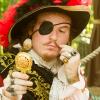 Last reply by Dread Pyrate Greyhound,
Last reply by Dread Pyrate Greyhound, -
- 2 replies
- 690 views
Just curious as to what flags a privateer during the GAoP would be allowed to fly? Could an English private man of war fly the Union Jack? What if they were from the colonies?
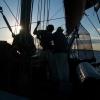 Last reply by Johnathan Atwood,
Last reply by Johnathan Atwood, -
- 6 replies
- 769 views
In response to a debate about the practicality of stays for the working woman in English Civil War circles Mrs F. shot this video. It might be relevant to many here, so I'm reposting it. http://www.youtube.com/watch?v=a8wwhlnprmE&feature=youtu.be
 Last reply by jendobyns,
Last reply by jendobyns, -
- 14 replies
- 1.2k views
Sigh.... So I have been reading John Esquemeling's "The Buccaneers of America" (more like plodding through, my reading time recently has been extremely scant), and I have noticed a few instances of the Buccaneers using "fireballs" (or was it "fire balls"?). Each time I've read that, I've had a little snicker from my remembering playing "Dungeons and Dragons" when I was younger (is that a 10 or 12 die fireball? ), then the little joke in my head stops, and I read on assuming that the fireball was some sort of term for a "molotov cocktail" type thing or perhaps a grenado or similar device. Does anyone have any other references to the use of "Fireballs" within either th…
 Last reply by Mission,
Last reply by Mission, -
- 12 replies
- 1.2k views
"UPON our Mountains, and especially on the Pyrenees, we meet with a kind of wild Goat, call'd, the Shamoy, or Rock Goat. There is a great Trade carried on with these Skins, by which they convey Oil, Wine, and other Liquids, out of the mountainous Countries, and of which they make several other Uses; for these Shamoy Skins, being dress'd, are converted into Gloves, Stockings, Drawers, Breeches, Waste-coats, Petticoats, Caps, &c. because they may be wafh'd as Linen is, and be dyed into what curious Colour you please, as Orange, Lemon, Buff, Buff, Black, Green, Red, Blue or the Like." (Pierre Pomet, The Compleate History of Druggs, 3rd Edition (1737), p. 260) I am guess…
 Last reply by Dread Pyrate Greyhound,
Last reply by Dread Pyrate Greyhound,



